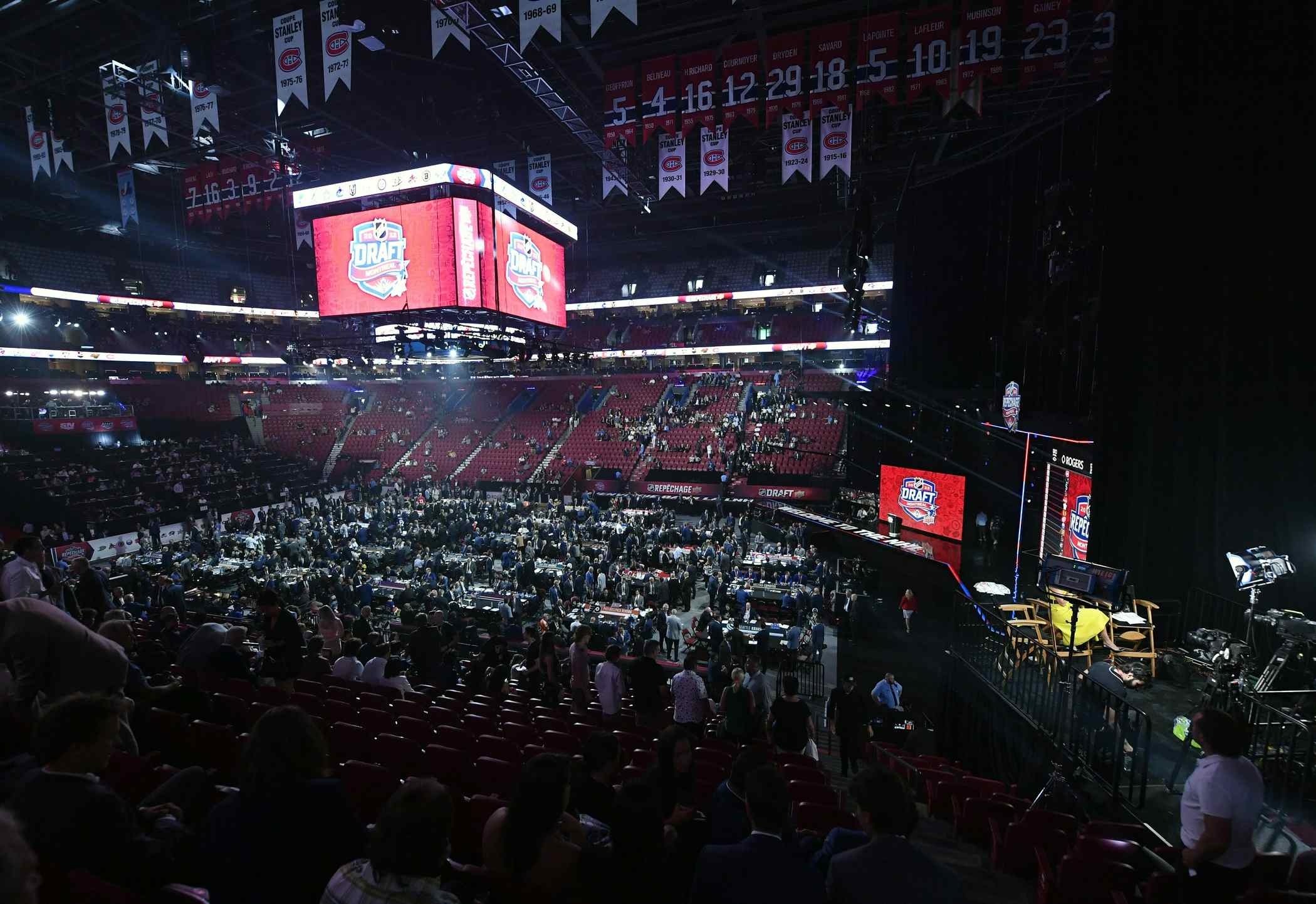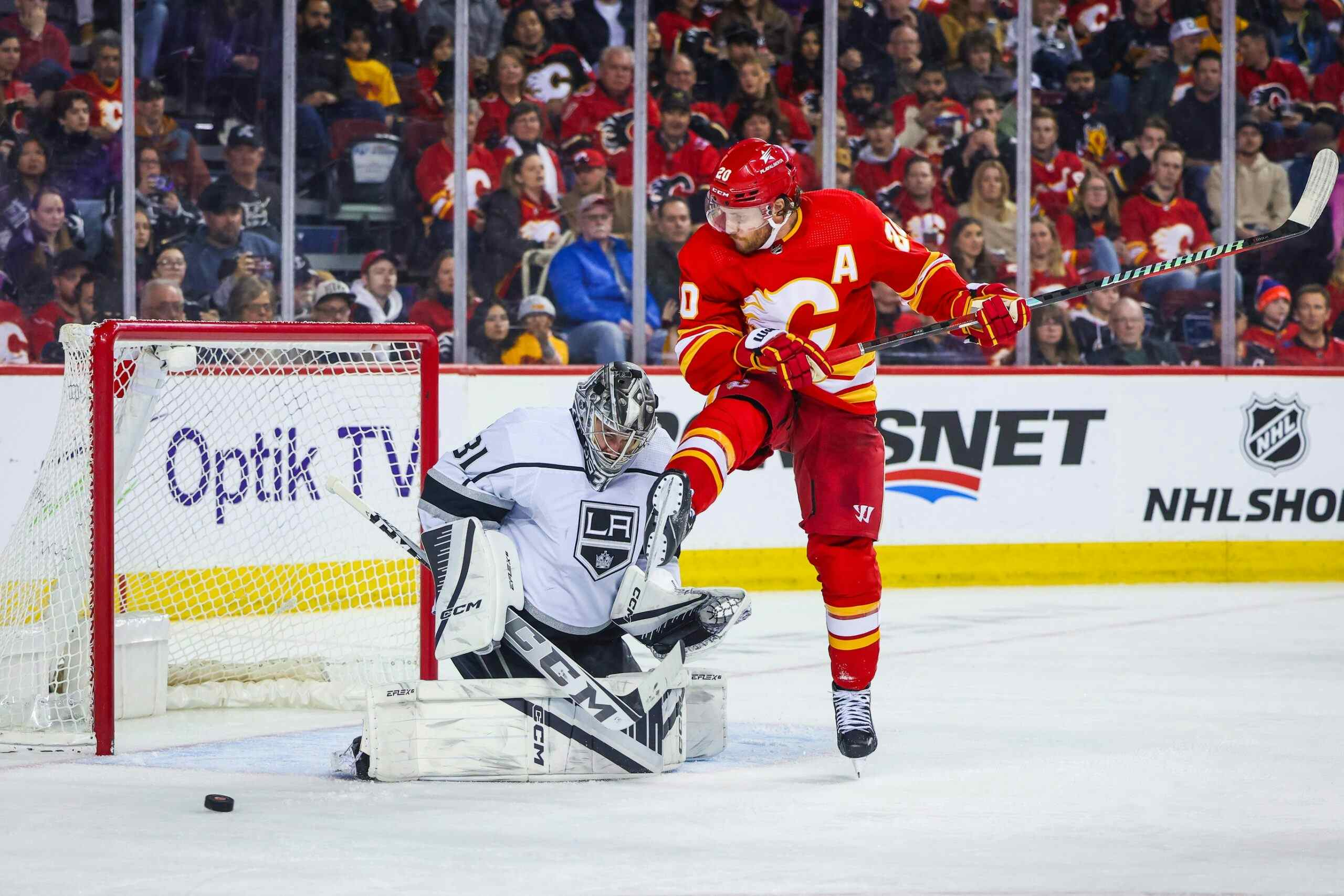Because it’s the Cap: Calgary Flames
Over the next month, we at NHLnumbers are going to be taking a look
at where each team in the league currently stands based on what we
learned from them last season, and where they realistically can and
should go this summer with the resources and cap space they have.
at where each team in the league currently stands based on what we
learned from them last season, and where they realistically can and
should go this summer with the resources and cap space they have.
If there’s one thing that we learned about the Calgary Flames after this disappointing season, it’s that this is still a young, rebuilding team. I mean, it’s not often that a team that is in the conference semifinals drops all the way to drafting sixth overall in one year, without the intention of blowing up the team going into the season. Even though it wasn’t an ideal year for the Flames, it definitely didn’t hurt the team the way the season played out. If anything, it helped add a top pick to an already young and talented team, while exploiting the team’s flaws that were covered up by the 2014-15 miracle.
LAST SEASON
Last season, the Calgary Flames were at the forefront of the analytics debate. As the team defying all odds, making it all the way to the second round of the playoffs despite being the third worst possession team in the league, they were a sense of hope for the mittenstringers and average Joe hockey fans who believed that numbers had no place in hockey.
Going into this season, even some of the analytics believers thought that the Flames had a fair chance at making the playoffs this season. With the acquisitions of Dougie Hamilton and Michael Frolik, both players who looked to help improve Calgary’s possession, and the seemingly weak Pacific division, the Flames had some optimism from last season, even if they hit some regression.
However, a 2-8-1 start to the season gave the early signs to what would be a rough season for the Flames, highlighted by terrible goaltending, a concussed defenceman, and heavy regression from some players, all costing the reigning Jack Adams winner Bob Hartley his job.
But, we often forget that despite last season’s playoff run, this is a rebuilding team, which means they can’t simply trade problem players, since they still want to be focused on the team’s future. However, a few key RFAs will be looking for big raises, and Calgary doesn’t really have the space to afford it, so it should be interesting to see how they manage to keep everyone, and offload the necessary cap space.
ROSTER ANALYSIS
It certainly wasn’t all bad for the Calgary Flames this season, although their are certainly negatives to come along with those positives.
Up front, Johnny Gaudreau set a new career high with 78 points this season, which tied him with Blake Wheeler and Joe Pavelski for sixth in the league. He also hit 30 goals for the first time in his career. Sean Monahan also set a new career high with 63 points this season, albeit with it only being one more point than last season. Adding to the “career high” department, stats-darling Mikael Backlund had a career high 47 points, as well as Joe Colborne’s 44 points. Also, Sam Bennett showed lots of promise in his rookie season, putting up 36 points.
However, the Flames also had their fair share of disappointments as well. Jiri Hudler saw his point total drop in half this season, after a career high 76 points. Also, Lance Bouma put up a measly seven points, after a 34 point season last year. The Flames only had 7 players with more than 20 points, and those same players were the only ones with 10 goals, so depth is certainly an issue, particularly when the depth isn’t an ideal defensive scenario either.
From an analytical standpoint, Backlund continued his consistently excellent job of defence, as displayed by his +5.62% 5v5 Score Adjusted Corsi Rel, while Mikael Frolik also helped out in that category with a +4.24%, part of the reason why they signed him. Gaudreau is also starting to look like he can hold his own in the defensive zone, with a +2.11%.
On the blue line, there were some strides forward. Calgary’s big three on the back end were all as good as advertised, while some of the others weren’t. Mark Giordano finally had a healthy season, and set a career high with 56 points, including 21 goals, while leading the regular blue liners with a +3.71% 5v5 Score Adjusted Corsi Rel. TJ Brodie also set a career high 45 points, despite an early injury, and his +2% Corsi Rel was second after Giordano’s. Dougie Hamilton also had a solid season after a rough start, putting up 43 points, while displaying his possession prowess from Boston later on in the season, with a +1.38% Corsi For.
On the flip side, Deryk Engelland looked atrocious, particularly in his time in the top-4 when the Calgary blue line was sparse. Dennis Wideman regressed hard, putting up only 19 points after scoring almost as many goals in the previous season (15). Meanwhile, known shot blocker Kris Russell continued to be the boat anchor for the Flames until they managed to deal him to Dallas at the deadline (for reference, Calgary had a 47.1% Score Adjusted Corsi For (25th) before Russell was traded, and improved to 49.4% (16th) after he left). Youngster Jyrki Jokipakka showed some promise, while Jakub Nakladal was solid, in hopes that they can shore up the blue line once Wideman and Engelland are gone next year (unless they’re resigned).
Their biggest issue this season was in net, unlike the previous year. Both Jonas Hiller and Karri Ramo were worse than they were last year, and Joni Ortio has planted some doubts in management after showing some promise beforehand. Niklas Backstrom was alright in his brief few games, but nothing special. No goalie could seem to stop a beach ball this season, and it looks to be an issue that needs to be solved going forward.
CAP SITUATION

You’d think that a rebuilding team shouldn’t have too many cap issues, but the Flames might have just that. They are in the terrible situation of having to add a lot of cap, while not being able to get rid of some, or at least very easily. While they have $20 million in space, they have to resign their two franchise players in Gaudreau and Monahan, build up the depth, and address their goaltending issues, so it’s tougher than you may think.
Aside from the net, the Flames have just two UFAs on their roster: Derek Grant and Nakladal. They don’t have much roster space for adding players, unless they don’t qualify some RFAs. Another player who will probably see a big raise is Colborne, after his 44 point season, so he’ll also be a tough squeeze under the cap. They also have to re-up Josh Jooris and Drew Shore as well, but those should be easy deals to sign, as long as they don’t give either of them term.
In net, they’ll certainly have a chance to start fresh, as Hiller, Ramo, and Backstrom are all UFA’s, while Ortio is an RFA. Hiller is for sure not coming back, as he has already signed in Switzerland, and it seems unlikely that they’ll resign Backstrom, so the only question is whether they choose to bring back Ramo, even for just a back up role, and look to the market for a new face in net.
Luckily for the Flames, this cap problem likely won’t last too long, as the albatross contracts of Mason Raymond, Ladislav Smid, Dennis Wideman, and Deryk Engelland are all off the books, it’s just a matter of whether they can get through this upcoming season with it.
OFFSEASON PLAN
The Flames essentially have three things that they need to get done this offseason: re-sign Gaudreau and Monahan, find a goalie, and address their forward depth.
The goalie should be first priority if the Flames are looking to contend this season. Luckily for them, there’s a lot of sellers, and not a lot of buyers. They can explore some of the free agents, such as James Reimer, Anton Khudobin if they feel like taking a chance, or, if they’re feeling risky, Cam Ward; or they can explore the trade route, with some targets including RFA Frederick Andersen, or who knows, maybe they can pry one of Tampa Bay or Pittsburgh’s goalies off of them. Regardless, there are a lot of options, and it will only cost them as much as they want it to. If they choose to let go of Ramo as well, you could look at a goalie like Chad Johnson or Jhonas Enroth for a backup option.
Next, re-signing the two faces of the Flames. This could be their first priority depending on your opinion, especially considering that their contracts might impact who else they can get. If Calgary is looking to go the route of locking them up long term, I’d expect Gaudreau to get a contract similar to Vladimir Tarasenko’s 8 year, $7.5 million contract, while Monahan’s might be in the $6 million range for a bit of a shorter term, probably 5-7 years. If they go 1-2 year bridge deals, the cost might drop $1-2 million, but it will probably end up costing them down the road, so it would be best to lock them up long term now.
Finally, after getting those two forwards re-signed, they might look to add depth up front. Nothing too drastic, as they already have 14 forwards locked up for next year, but maybe one or two forwards to add depth scoring. Much like the goalies, there is certainly a market for those. Whether they look to a cheap option like PA Parenteau, Matt Cullen, or Jiri Tlusty, or go for a slightly more expensive option, like Sam Gagner, Teddy Purcell, or David Perron (coincidentally, all former Oilers), it’s not a bad idea to add one or two in free agency to fill up the roster spots.
After that, there isn’t much else to look at. Their defence is all locked up, and once Wideman and Engelland are off the books, they’ll have the cap and roster space to take care of that, but until then, these are the Flames’ only concerns.
CONCLUSION
What ended up as a disappointing season for the Flames this season only shows more promise for the years to come. After next season, their cap situation looks great after this offseason, and they have the sixth overall pick, so they have a chance to add to their already promising prospect pool.
Like last offseason, the Flames will need to prove that they are committed to their long term plan, no matter how good (or in this case, bad) the team looked the year before. They didn’t overreact to a playoff success last season, and only looked to improve the team through smart trades and signings, so hopefully the Flames do the same this year, and look to improve the team instead of blowing it up.
Regardless, the Flames have a bright future ahead for them, and this season was one of those painful years that management talks about when the rebuild starts. They need to look at a few things to really improve, but they aren’t in a position like where they were four years ago.
Previously in this series:
Recent articles from Scott Maxwell





